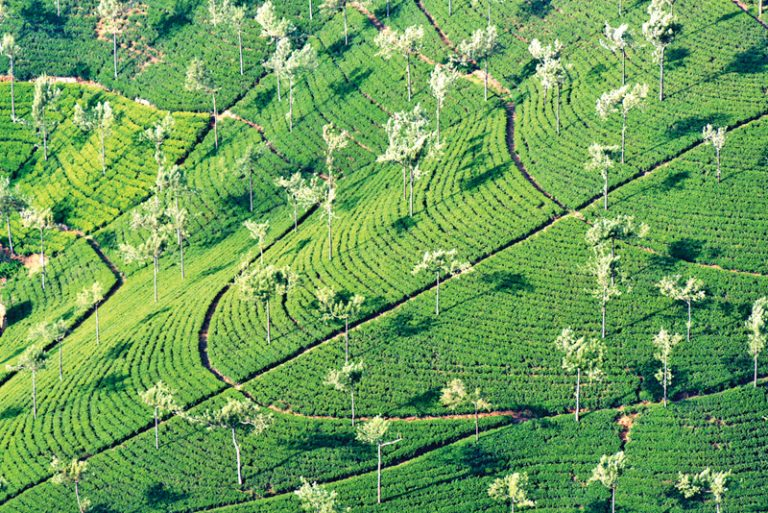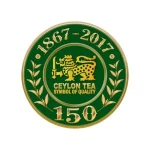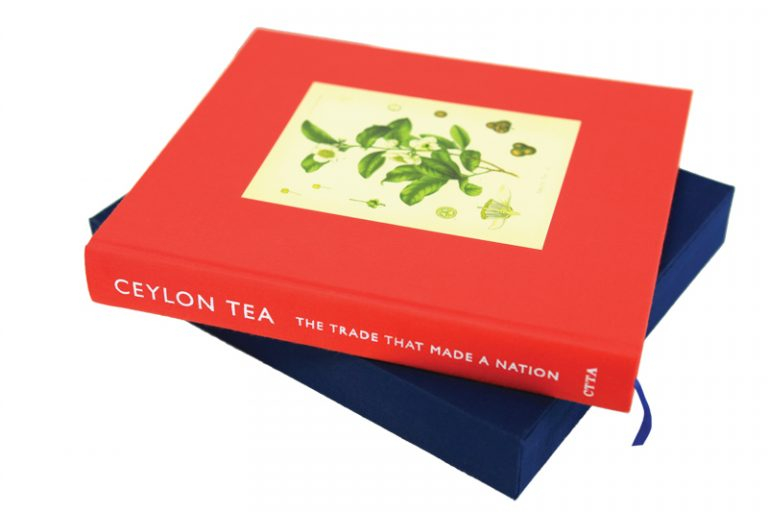
© Dominic Sansoni
Being the 150th year anniversary of the tea industry in Sri Lanka, the Colombo Tea Traders’ Association (CTTA) decided to commemorate this historic milestone with the publication, ‘Ceylon Tea – The Trade that Made a Nation’.
Words Richard Boyle

with his cousin Henry Stiven
 The CTTA approached photographer and visual archivist Dominic Sansoni, who for over 30 years has captured astonishing images of the soul of Sri Lanka, the ancient and modern. Dominic recommended Richard Simon as author – both had worked together extensively in the past on book projects. Richard Simon had a meeting with the instigator of the tea book, Anselm Perera, Chairman of the CTTA. Also present were veterans of the tea industry, David Janszé and Dickie Juriansz, both members of the committee, which oversaw the project.
The CTTA approached photographer and visual archivist Dominic Sansoni, who for over 30 years has captured astonishing images of the soul of Sri Lanka, the ancient and modern. Dominic recommended Richard Simon as author – both had worked together extensively in the past on book projects. Richard Simon had a meeting with the instigator of the tea book, Anselm Perera, Chairman of the CTTA. Also present were veterans of the tea industry, David Janszé and Dickie Juriansz, both members of the committee, which oversaw the project.
“Dickie Juriansz had made a study of tea,” Richard explains when I met with Dominic as well as himself to discuss the evolution of the publication. “So Dickie wrote an outline of what the book should be. After having discerned what the CTTA required I did what I usually do: reinterpret the brief in terms of what I wanted to deliver. I sent the CTTA an outline, not that different from Dickie’s original – except it added aspects of Sri Lanka’s history – and was found to be satisfactory.”
As a researcher and an author, Richard says he is “interested in looking at specific developments in the Sri Lankan economy, business sector and culture in general, also looking back at the origins and the way it had created an impact on the relevant events in the history of the country. I thought it was fine to use this procedure for tea – to tie in the history of the country with the tea industry and compare parallels and influences.”
Where research was concerned, Richard had prior experience from writing the content for the Sri Lanka Tea Board website. He had therefore read the book that is considered the standard work about the Ceylon Tea industry, D M Forrest’s ‘A Hundred Years of Ceylon Tea’ (1867-1967), which his further writing for the CTTA would largely supplant.
D M Forrest had his limitations as Richard observes. “Basically he covers the British participation in the industry rather than the development of the industry itself, which was in post-WWII becoming Sri Lankan.” Alternatively, Richard provides an incisively Sri Lankan yet objective version rather than an Anglicised and subjective version by someone from the industry.
Richard had access to many of the national and industry archives, while the likes of Roshan Rajadurai, former chairman of the Planters’ Association of Ceylon, made their collection of the trade and statistical reports available. “For the remainder of the research I used the internet, as everybody does. Forrest was once again the primary source, however supplemented by the enormous amount of books about the colonial history of Ceylon.”

Examples are in his Preface: A History of Sri Lanka by Kingsley de Silva, Sir James Emerson Tennent’s Ceylon, Frederick Lewis’ Sixty Years in Ceylon, Sir Thomas Villiers’ work Mercantile Lore and Arnold Wright’s Twentieth Century Impressions of Ceylon.
“Another source I turned to for local colour was E F C Ludowyk’s Those Long Afternoons. I owe a debt to E F C Ludowyk in terms of the quotations as I tended to quote him from various works.
“This is not an ordinary coffee table book after all. What we have tried to create is…an accurate and also informative history of the industry.”
“But the best source was former Lieutenant Commander Somasiri Devendra.” During his naval days, Devendra looked for warehouses and the jetties for the Trincomalee Tea Administration at China Bay, Trincomalee, and on leaving the service became a prominent figure in the tea trade.
Regarding the visual archive, Dominic explains: “I was trying to find mostly old images of the tea industry not seen before. So I went for private collections and tried to stay away from the long-established big studios because the images they produced have often been seen before.”
He lamented how his efforts as illustrations’ editor were hampered by white ants, which had destroyed much research material, especially tea shipping from Trincomalee. But luckily for him “a fine gentleman, Sam Madhavan, arrived one day with pictures of Trincomalee, which were invaluable . . . It is crucial to build up a digital archive.”
“Someone wrote from England and sent an album of photos. What arrived gave me goose bumps. It was obviously commissioned by the Colombo Commercial Company – astounding, yet only two pictures made it into the book.
Alas, only a small number of the images Dominic discovered appear in the book. “Picture editing can be quite a brutal affair,” he admits. “It is horrible what you have to do, especially if you get emotionally attached to a photo, but it does not illustrate the text.”
Dominic Sansoni stressed the contribution of the third member of the team, Sebastian Posingis, not present. Officially the book designer, he was further responsible for the process of the commemorative publication, and, as both the other team members agreed, eventually became the book’s editor. “Sebastian provided a great sense of stability,” Dominic states, “and was very clear in the end about what he wanted to do in terms of design, layout and quality.”
Regarding the book, finally titled Ceylon Tea: The Trade that Made a Nation, Richard emphasises, “this is not an ordinary coffee table book after all. What we have tried to create is a book that although it does not pretend to be a scholarly history for academics, is an accurate and also informative history of the industry.”
[ngg_images source=”galleries” container_ids=”1365″ display_type=”photocrati-nextgen_basic_thumbnails” override_thumbnail_settings=”0″ thumbnail_width=”100″ thumbnail_height=”80″ thumbnail_crop=”1″ images_per_page=”20″ number_of_columns=”0″ ajax_pagination=”0″ show_all_in_lightbox=”0″ use_imagebrowser_effect=”0″ show_slideshow_link=”0″ slideshow_link_text=”[Show as slideshow]” order_by=”sortorder” order_direction=”ASC” returns=”included” maximum_entity_count=”500″]


